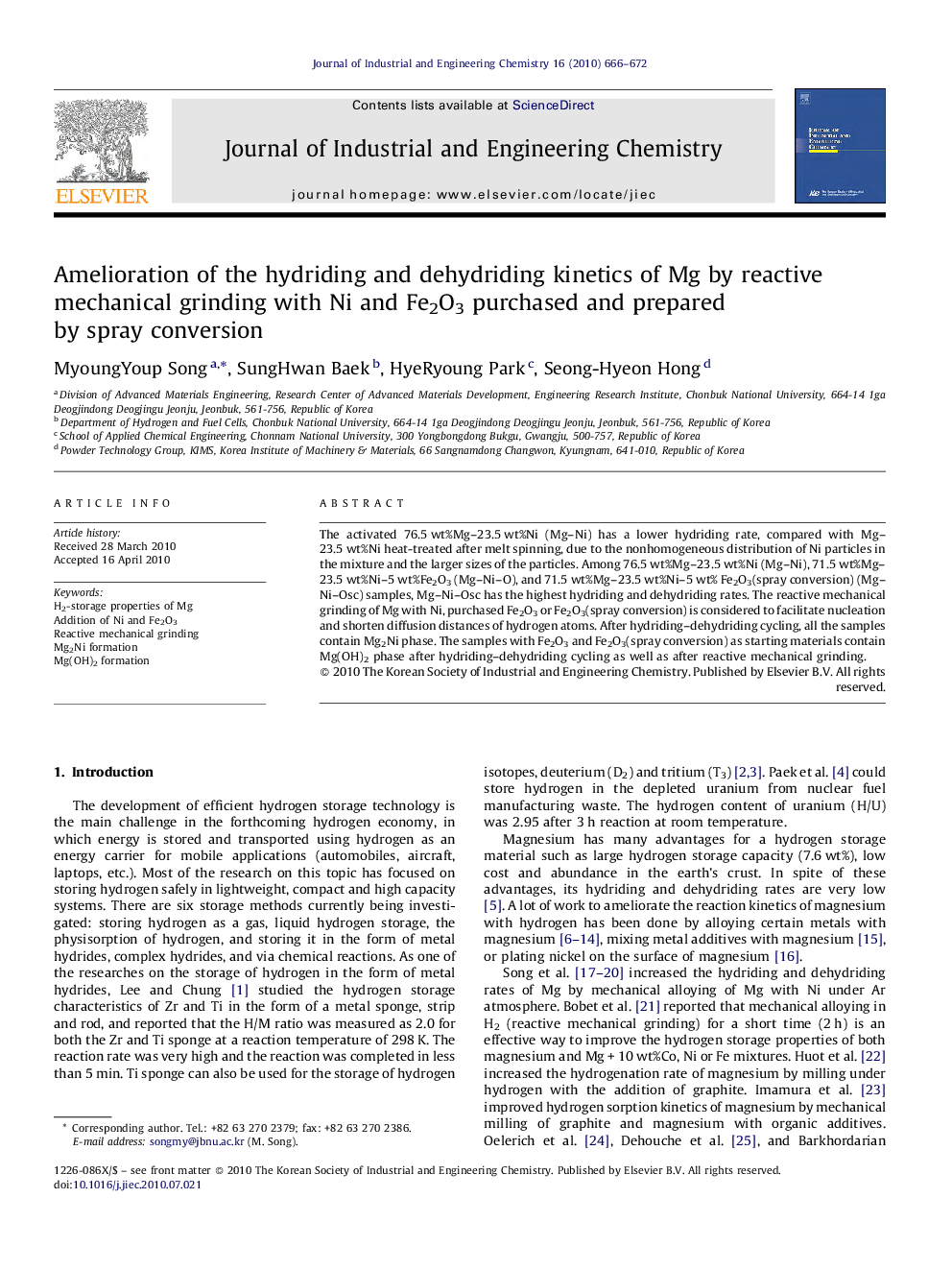| Article ID | Journal | Published Year | Pages | File Type |
|---|---|---|---|---|
| 229208 | Journal of Industrial and Engineering Chemistry | 2010 | 7 Pages |
The activated 76.5 wt%Mg–23.5 wt%Ni (Mg–Ni) has a lower hydriding rate, compared with Mg–23.5 wt%Ni heat-treated after melt spinning, due to the nonhomogeneous distribution of Ni particles in the mixture and the larger sizes of the particles. Among 76.5 wt%Mg–23.5 wt%Ni (Mg–Ni), 71.5 wt%Mg–23.5 wt%Ni–5 wt%Fe2O3 (Mg–Ni–O), and 71.5 wt%Mg–23.5 wt%Ni–5 wt% Fe2O3(spray conversion) (Mg–Ni–Osc) samples, Mg–Ni–Osc has the highest hydriding and dehydriding rates. The reactive mechanical grinding of Mg with Ni, purchased Fe2O3 or Fe2O3(spray conversion) is considered to facilitate nucleation and shorten diffusion distances of hydrogen atoms. After hydriding–dehydriding cycling, all the samples contain Mg2Ni phase. The samples with Fe2O3 and Fe2O3(spray conversion) as starting materials contain Mg(OH)2 phase after hydriding–dehydriding cycling as well as after reactive mechanical grinding.
